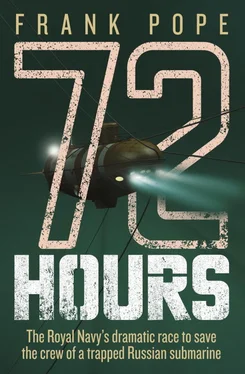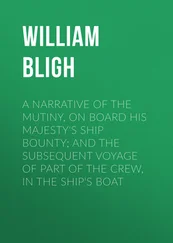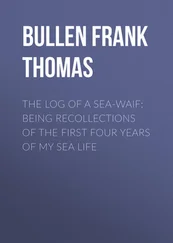The four cameras showed a blizzard of sediment caught in the lights streaming upwards, against a backdrop of darkening blackness. There was silence in the cab but for Nuttall’s voice reading off the depths. As he went past 100 feet, the screens were showing fewer snowflakes and a pitch-black background. Riches could almost feel the pressures starting to crush in on Scorpio, and the fingers of cold probing around all the recently opened seals.
‘Shifting past 345 degrees, a bit of port lateral on auto,’ muttered Gold. He was keeping an eye on the electronic compass, keeping Scorpio pointed towards where the Russians said AS-28 was stranded.
Nuttall frowned. Scorpio’s nose was dipping. He leaned forward to a microphone on the panel. ‘A little more speed on the winch there, Will.’
‘Roger, more speed on the winch,’ came the confirmation from Forrester. Scorpio settled back to its correct trim, the umbilical no longer lifting the stern.
The team were using an open microphone system, meaning there was no need to press a button to transmit. That allowed all hands to stay on the job at all times, be it piloting the ROV or operating the crane or tending the umbilical. It also meant that they could all listen in on what was going on inside the cab. Every one of them knew that their presence in the cab could be a costly distraction to the two ROV pilots. By listening in they could at least keep track of how the rescue was going.
As Scorpio passed 500 feet, Gold reached forward and started tuning the Ametech sonar mounted in the centre of the control panel. When the volume was turned up, a metallic throbbing sound filled the cab. The sound – like an idling circular saw – was the signature noise of an active sonar. Together with the pulsing signal on the screen it made part of Riches settle back into his submariner’s skin. Like all of those in that room, Riches now felt as though he was on board the robot.
‘Six hundred feet,’ said Gold. ‘Bottom is only about one hundred below –’ Before he could finish his sentence, the pie-slice wedge that showed the sonic image of the water ahead of Scorpio suddenly filled with a hard-edged orange block, and the circular saw now sounded as though it were off-centre, scraping itself with every revolution. ‘Holy moley. What the hell is that?’
‘Antenna,’ said Podkapayev. Even in Russian his meaning was clear. Gold and Nuttall looked at one another. That was a bigger sonar reading than either of them had ever seen before in the open sea. This thing was huge. It looked like a harbour wall, thought Gold.
There was a reason why the hydrophone was so enormous. Long wavelengths travel furthest, either through land or sea, so to listen out for far-away events an early-warning system needs to be able to pick them up. To do that, a microphone needs to be at least as large as that wavelength – in this case over 100 metres long, and 17 metres high. This unit was part of a network of similar arrays stretching a thousand miles up the entire Russian east coast, listening for rumbles from across the entire Pacific Ocean basin. Their exact locations were a closely guarded secret, but in this region they were reputed to be located seaward from the Schipunskiy Cape, from Anglichankai, as well as from Berezovya Bay.
The fact that the array was installed just below 200 metres was no accident. It had been suspended in the upper reaches of what is known as the Deep Sound Channel, a natural conduit that funnels sound far greater distances than at other depths. In the same way that the mirrored inner surfaces of a fibre-optic cable can transmit pulses of light round corners and over thousands of miles by continually reflecting the light, different densities of water above and below the Deep Sound Channel make them reflective. The upper boundary – at around 200 metres – is relatively warm and salty while the lower boundary – deeper than around 1,000 metres – is very dense and cold. Sounds produced in between them will tend to travel great distances, bending around the curvature of the Earth.
Russia was not the only nation to install listening posts in the Deep Sound Channel. The first SOSUS (Sound Surveillance System) network installed by the USA and UK became operational in the early 1960s, tracking Russian nuclear submarines as they passed through narrow channels between Greenland, Iceland and the UK. Other than passing through the dangerously shallow North Sea and English Channel, this was the only route that Russian submarines of the Northern Fleet could take when leaving their bases on the Kola Peninsula in the Barents Sea for the Atlantic or the Mediterranean. By picking up their acoustic signatures there Russian submarines could be tracked, either remotely via arrays, or physically with UK or US submarines. After it had proved its worth, the system was then extended to cover other areas in the Atlantic and the Pacific. In August 2000, the NATO arrays had picked up a strange noise – a noise that turned out to be the death-throes of the Kursk .
It took skilled operators to disentangle the sounds, but it could be done. In 2008, the UK’s underwater listening post in Gibraltar was able to pick out the propellers of the QE2 as she pulled out of New York. But while the metallic thrashing of a civilian propeller might be easy to detect, when cloaked with military sound insulation and muffled by distance, the signals become harder to read. For all humanity’s attempts to scrape it clear of life, the sea is not a silent place. Snapping shrimp are infamous among sonar operators for the din they create, a marine equivalent of a field of screeching crickets. And whales also use the Deep Sound Channel to communicate with astounding acuity. Some scientists believe that the blue whale – the biggest creature ever to have lived on this planet – is able to distinguish between individuals across the entire Pacific. Other sounds are more mysterious still. In the 1970s, sub-sea snoops were blasted with a noise that has remained unidentified to this day. It was loud enough to have been an underwater landslide or earthquake, yet its waveform appeared to be biological in origin. If it was, then whatever produced it would have had to be bigger than a blue whale.
Approaching the array, Gold felt like he was looking at such a monster on the sonar. His role in the exercises that he’d taken part in over the years was always to find the submarines that were playing dead. Although such diesel-electric and nuclear craft can be huge, their hulls are usually coated in rubbery tiles. Aside from providing valuable heat insulation, they are specifically designed to muffle the probing pings of active sonar. A 100-metre submarine could have a sonar paint that was easy to miss. But not this hydro-phone array.
‘Okay, let’s hold this depth and get over there,’ muttered Gold.
‘Start feeding out there, Will, slow and steady,’ Nuttall said into the deck radio, and started pushing Scorpio through the water towards the looming shape on the sonar.
The room was getting hotter, and Nuttall was aware that beneath his long mop of hair his shirt was already starting to stink. He’d not had a chance to change since leaving Barrow-in-Furness. He put it out of his mind and concentrated on keeping his eye on the direction indicator, the sonar and the depth pressure gauge while continually scanning the instruments and warning lights for any sign of trouble. So far, so good.
Less than five minutes later, he slowed the forward thrust. The sonar reflection was menacingly close, but still he couldn’t see anything in the unfamiliar black and white of the front camera display. Then something began to appear. A huge, curving wall of barnacle-coated metal filled the screen.
The video, stills and drawing they’d seen showed the AS-28 up at the end of one of the cylinders with the structure on its starboard side, so Gold told Nuttall to head to port.
Читать дальше












